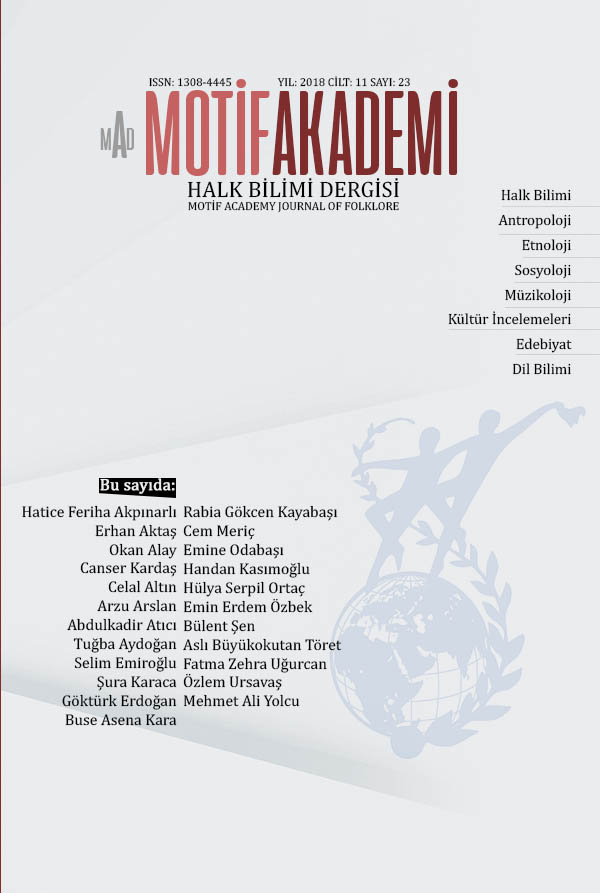HAKAS HALK ANLATMALARINDA İDARİ BİR UNVAN OLARAK ‘ÇAYZAN’
CHAIZAN’ AS A GOVERNMENTAL TITLE IN KHAKAS FOLK NARRATIVES
Author(s): Erhan AktaşSubject(s): Cultural history, Customs / Folklore, Political history, Government/Political systems, 6th to 12th Centuries, Theory of Literature
Published by: Motif Halk Oyunları Eğitim ve Öğretim Vakfı
Keywords: Ancient Turks; Yenisei Kyrgyzs governmental titles; Khakas folk literature; chaizan;
Summary/Abstract: The Khakas known as Yenisei Kyrgyz in Orkhon scripts are one of the Turkic peoples in the Altai-Sayan region as written in Orkhon scripts which states that The Khakas continued their existence with several transliteration samples of Chinese annuals since the Hun period, and some materials composing stone literature known as Yenisei Scripts are thought to have been left by them by considering the location where artifacts were left. Until the first half of 9th century, Yenisei Kyrgyz such as the Hun, 1st and 2nd Turkic Khaganate and Uyghur Khaganate in which federative political structures were seen ruled over the region of Otuken including divinity in a political and religious sense for Turks from the year 840. The political structure of these Turkic peoples who came under the Mongols’ domination with the 13th century later entered into the Russian domination with different regimes and is still under this domination. The term “chaizan (çayzaŋ) / saizan (sayzaŋ) / zaisan (zaysaŋ) / cheizen (çeyzeŋ)” which is a subject of this study is a governmental title borrowed from Chinese and is a Khakas transcription of the word tsăi-hsiang (宰相) or from Mongolian to Khakas. Chaizan which is one of titles in early Kyrgyz political structure is an uncommon expression in the studies on of old Turkic state system. In addition, it has of great importance to indicate sociopolitical aspect of Kyrgyz-Chinese relations or Kyrgyz-Mongol / Dzungarian relations which would be distinctively touched upon in the article. This situation forms the political historical aspect of the paper. In parallel with this situation the Yenisei Kyrgyz/Khakas who had a rich and mobile historical process also had an oral culture and folk literature including a large corpus. Especially the epic type named as ‘alıptığ nımah’ (epic, saga), ‘kip-çooh’ (legend), ‘nımah’ (fairy tale) and ‘çayzan-çooh’ (legends about chaizans) corresponding to the epic type on historical characters and other epic types are important as they include reflections of social and political life and the relevant term appeared in the works of oral literature. In this manner, the study aims to explain the role of this term in Turkic language and old Turkic political history. Finally, the context-based use of the term within the context of Khakassian oral literary works would be exemplified by means of scripts by considering similarities and/or differences in the world of substances.
Journal: Motif Akademi Halkbilimi Dergisi
- Issue Year: 11/2018
- Issue No: 23
- Page Range: 1-18
- Page Count: 18
- Language: Turkish

